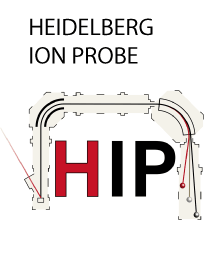Sample Preparation
General Remarks
Samples have to be disc-shaped (max. 25.4 mm in diameter and 5 mm in height) and ultra-high vacuum stable. For accurate and precise analysis, samples must be flat and well-polished. A conductive layer of carbon or gold has to be applied to insulators before analysis. The SIMS sample holder permits reliable analysis within 8 mm from the center of the mount. Therefore, sample mounts have to be prepared in such a way that materials of interest are located inside this “bulls-eye” area. Targeting outside this area is not recommended.
A reflected-light microscope is used to navigate on the sample when working at the SIMS instrument. We therefore recommend acquiring high-quality reflected-light and/or SE images of the coated sample before analysis to facilitate locating the measurement locations. The lab offers access to peripheral instrumentation required for pre- and post-analysis sample characterization (e.g., optical microscopy, stylus- and contact-free surface profilometry, electron microscopy). Inexperienced users are advised to use sample preparation facilities available at HIP because mounting, surface preparation, and sample documentation/characterization are critically important for analysis success.
Recipe for Heavy Mineral Separation - From Rock to Mineral Mount
To separate heavy minerals such as zircon, baddeleyite, rutile, monazite etc. from a rock, we apply a very quick and simple method using only a hammer, a sieve and a water panning technique. This way, we minimize the risk of sample contamination considerably and we also avoid the use of heavy liquids. The video tutorial below provides detailed guidance on the complete mineral separation process from whole rock to the mineral mount ready for analyses.
Chapters:
00:00 Introduction & advantages of the method
01:26 Tools
02:53 Amount of raw material?
03:36 When is the method useful?
04:12 Cleaning raw material
07:19 Crushing of the material
09:27 Sieving the material
10:47 Density separation using water
24:22 Hand-picking heavy minerals under the microscope
32:12 Epoxy mount preparation
38:28 Polishing the epoxy mount
45:40 Cleaning & coating the epoxy mount
Zircon Separation Workflow
(Click on image for larger version)



